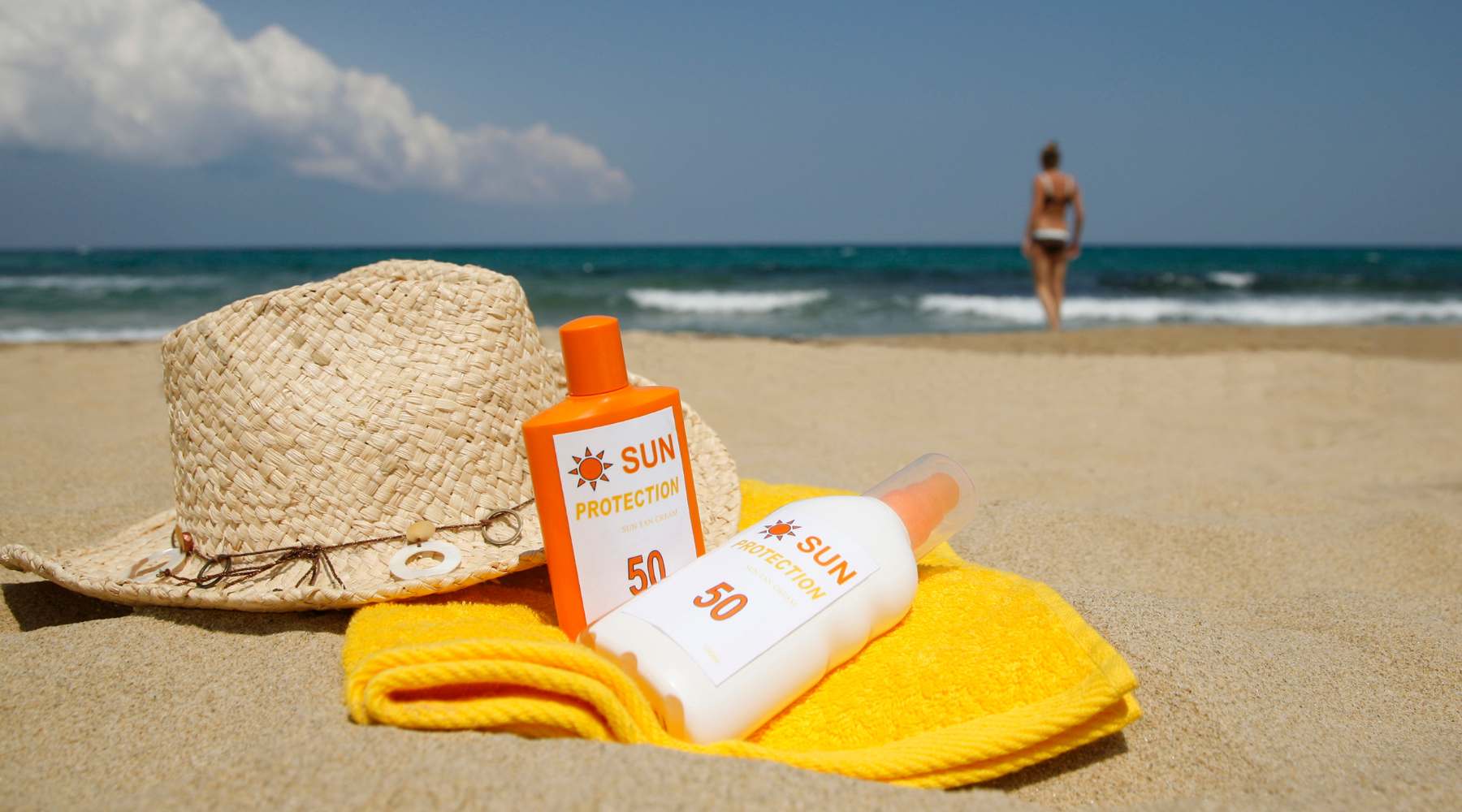
UV index burn time: a guide to safe tanning
Skin burns faster in higher UV index levels, and slower in lower levels. We’ll provide some general guidelines for safe UV exposure so you can avoid sunburn and skin damage.
Quick links:
UV index burn time chart (in minutes)
UV index burn time by skin type
No matter your skin type or amount of time spent outdoors, take precautions to protect your skin, especially during summer months, when sunlight is more intense. Excessive ultraviolet radiation exposure leads to sun poisoning, premature aging, and skin cancer, all of which can be avoided if you know how to protect yourself. At all radiation levels, wear broad-spectrum sunscreen, UV-blocking sunglasses, and a wide-brimmed hat.
Check the UV index for your area before heading outside, and use sun protection on higher-UV days.
UV index burn time chart (in minutes)
A higher UV index indicates a higher risk of harm—in a shorter time interval. The burn times in the UV index scale below are based on an average across all skin types. People with different skin types burn at different rates, so don’t assume your skin will be safe within these intervals. If you have fair skin, you will burn more easily and should take extra care.

UV radiation levels fluctuate from day to day, and also by time of day, with more intense ultraviolet radiation during the middle of the day. Avoid direct exposure to UV radiation during midday, especially for long periods of time.
UV index 1–2 burn time
A UV index of 1–2 puts you at minimal risk of sunburn, but still take precautions when going outdoors. After 60 minutes, you can get a burn on unprotected skin, so use sunscreen of at least SPF 30.
UV index 3–5 burn time
There is a moderate risk at UV levels of 3–5, with burns occurring after 45 minutes of sun exposure. To reduce sun damage, reapply sunscreen every two hours and wear sunglasses. The sun is most intense during midday hours, so limit time outside between 10 am and 4 pm.
UV index 6–7 burn time
Within 30 minutes of sun exposure at a UV index of 6–7, the sun can burn the skin. To reduce damage, wear sun-protective clothing such as a long-sleeved shirt, long pants, and a hat with a wide brim. Apply broad-spectrum sunscreen to uncovered skin, and reapply every two hours. Avoid time outside or seek shade during the hours of peak sun.
UV index 8–10 burn time
At a UV index of 8–10, there is a high intensity of ultraviolet radiation. After just 15–25 minutes of exposure, you can burn. Wear sunscreen of at least SPF 50 and limit time outdoors, as any unprotected skin can be affected. Wear sun-protective clothing and seek shade when outdoors, especially during peak UV radiation hours (10 am–4 pm).
UV index 11+ burn time
A UV index of 11+ is extreme. Any exposure to this UV intensity can cause long-lasting damage. In less than 10 minutes, you can get a sunburn at a UV index of 11. Chronic exposure at these levels brings a high risk of skin cancer, so avoid direct contact with sunlight as much as possible. If you do go outside, apply SPF 50+ sunscreen and wear clothing that covers the arms and legs.
UV index burn time by skin type
If you have light skin, unprotected sun exposure will burn you faster. People with darker skin have more active melanin pigment cells, which act as a barrier to UV rays. Those with black skin have the highest melanin content. Extremely fair-skinned people lack melanin defenses.
No one, no matter how much melanin their skin has, is impervious to UV radiation and its damaging effects. Everyone must take precautions with intense sun exposure, especially during periods of high UV intensity.
UV index FAQ
Do you tan faster in water?
Due to the reflective properties of water, you will tan faster and burn more easily in water. The UV radiation coming from the sun bounces off the water’s surface and increases the intensity of UV rays. Just the presence of water causes this effect, so even if you sunbathe poolside or on the beach, be extra careful to protect your skin. Wear sun-protective swimwear and reapply sunscreen often, especially after swimming.
What is the highest UV index on earth?
The highest recorded UV index was 43.3 at Bolivia’s Licancabur volcano, though it’s very rare to see radiation levels higher than the mid-20s. Extreme UV indexes are most common near the equator where the sun’s rays are most intense.
Is UV index 10 too high to tan?
At a UV index of 10, you are at an extreme risk of skin damage, so any time in direct sunlight at this intensity should be avoided. In just 15 minutes outside, you can get sunburned. The optimal UV index for tanning is in the lower ranges, such as UV 3–though you need to exercise caution and be responsible even then.
Why won’t my legs tan?
The skin on your legs is thicker, so it is harder for the UV rays to penetrate the melanin-producing cells that are responsible for the tanning process. That means it will take more time to get a tan on your legs than your face or arms. Even if you aren’t getting tan or sunburnt, you can still be causing damage to the skin. Even while sunbathing, use sunscreen of SPF 50+ to stay safe.
Which US state has the highest UV index?
Hawaii, New Mexico, Arizona, and Florida report the highest levels of UV radiation, though many US states have days of extreme UV levels during the summer months. One determining factor of a location’s UV index is its distance from the sun, so places closer to the equator and at a higher elevation are more likely to experience intense UV exposure.
Is there still UV in the shade?
You can still experience UV exposure in the shade, so protect your skin any time you’re outside. Though the shade protects you from direct sunlight, surfaces such as water or concrete can reflect the sun’s rays onto your skin.
Can you get Vitamin D from UV index 1?
Any UV exposure stimulates the production of Vitamin D. Though Vitamin D is necessary for healthy bodily function, more time in the sun does not have purely positive effects. Too much sun exposure has its own serious, long-term effects, so limit time in direct sunlight to protect your skin.
Further reading
What’s the difference between SPF 30 and 50 sunscreen?
How can I get rid of sunspots?
What is the difference between sun poisoning and sunburn?
What’s the difference between UPF and SPF?



Leave a comment
This site is protected by hCaptcha and the hCaptcha Privacy Policy and Terms of Service apply.